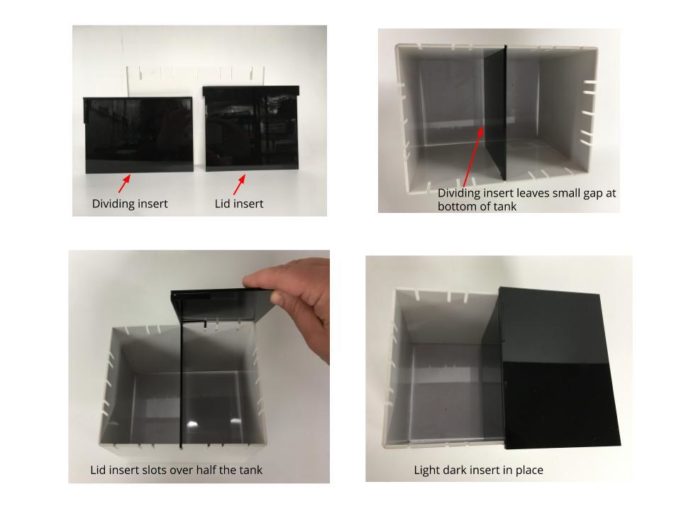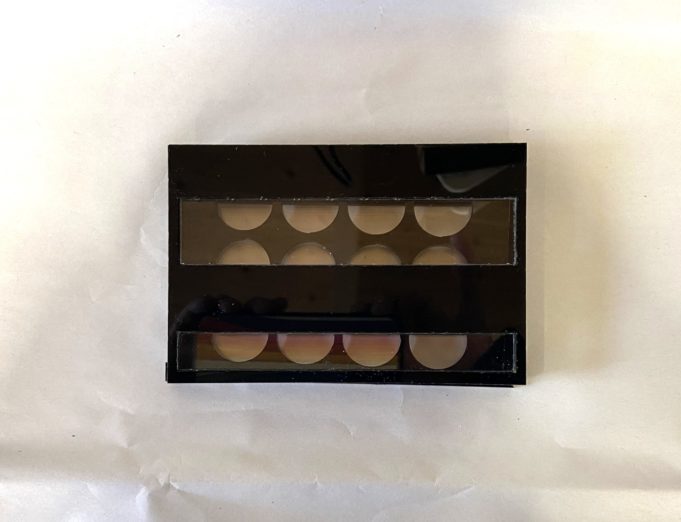The preference for either dark or light environments is a behavioural trait seen across many species. Adult zebrafish exhibit an innate preference for dark environments (and avoidance of light environments). However, zebrafish larvae show an opposite preference for a light environments. The light/dark preference test, for both larval and adult zebrafish, is a validated assay to assess anxiety-like behaviours, the anxiolytic drug effects, and to investigate the (epi)genetic bases of anxiety-related behaviour.
Experimental setup
Adult zebrafish
The Zantiks AD or LT units can be used for the light/dark preference assay in adult zebrafish. The dividing insert and the black lid are used to create the experimental environment. The dividing insert splits the experimental tank to separate the 'dark' and 'light' environments and leave a shallow gap at the bottom for the fish to swim between the two.
When only tracking one fish in the tank the dividing insert is used. If tracking more than one fish (i.e., up to four fish) in different arenas, length-ways inserts can create different arenas for each individual fish.

Larval zebrafish
The Zantiks MWP unit can be used for the light/dark preference assay in larval zebrafish. The Zantiks light/dark well plate and covers are used to create the two zones. The covers have black bars to create a darken side for each well.

Light Stimulus
There are two options available for setting up the light stimulus.
- The overhead light
- In the Zantiks AD unit, the black lid blocks the overhead light creating the 'dark' environment on one side of the tank.
- In the Zantiks MWP unit, the well plate lid blocks the light from one side of each well.
- Illumination from below
- In the Zantiks AD unit, this is via the built-in screen, which is visible through the tank’s clear bottom. A square white light can be programmed to appear in one half of the tank.
- In the Zantiks MWP unit, this is via the light stand and use of the bottom cover to block the light.
Results / Data output
There are several parameters that are commonly used in the light/dark preference task for fish, including: time spent (secs) and distance moved (mm) in light and dark zones, latency to first enter the light zone and number of entries into the light zone. Thigmotaxis (swimming near the tank walls) can also be used as a behavioural measure in this task. Zantiks units can be scripted to automatically process these variables.
Protocol scripts downloads
There is one script for the Light/Dark preference test for adult zebrafish.
There is one asset you will use which splits the tracking arena into two separate target zones. The darkened area is approximately 50% of the tank and the light area is approximately 50% of the tank.
Asset
You will need to upload the appropriate asset into the Asset directory on your Zantiks Control Console and ensure the correct asset name is in the LOAD(ZONES,"name_of_asset") command in the script.
See the Calibrating your Zantiks unit page and Asset building in the AD unit page or Asset building in the LT unit page for details on how to create assets customised to your system.



